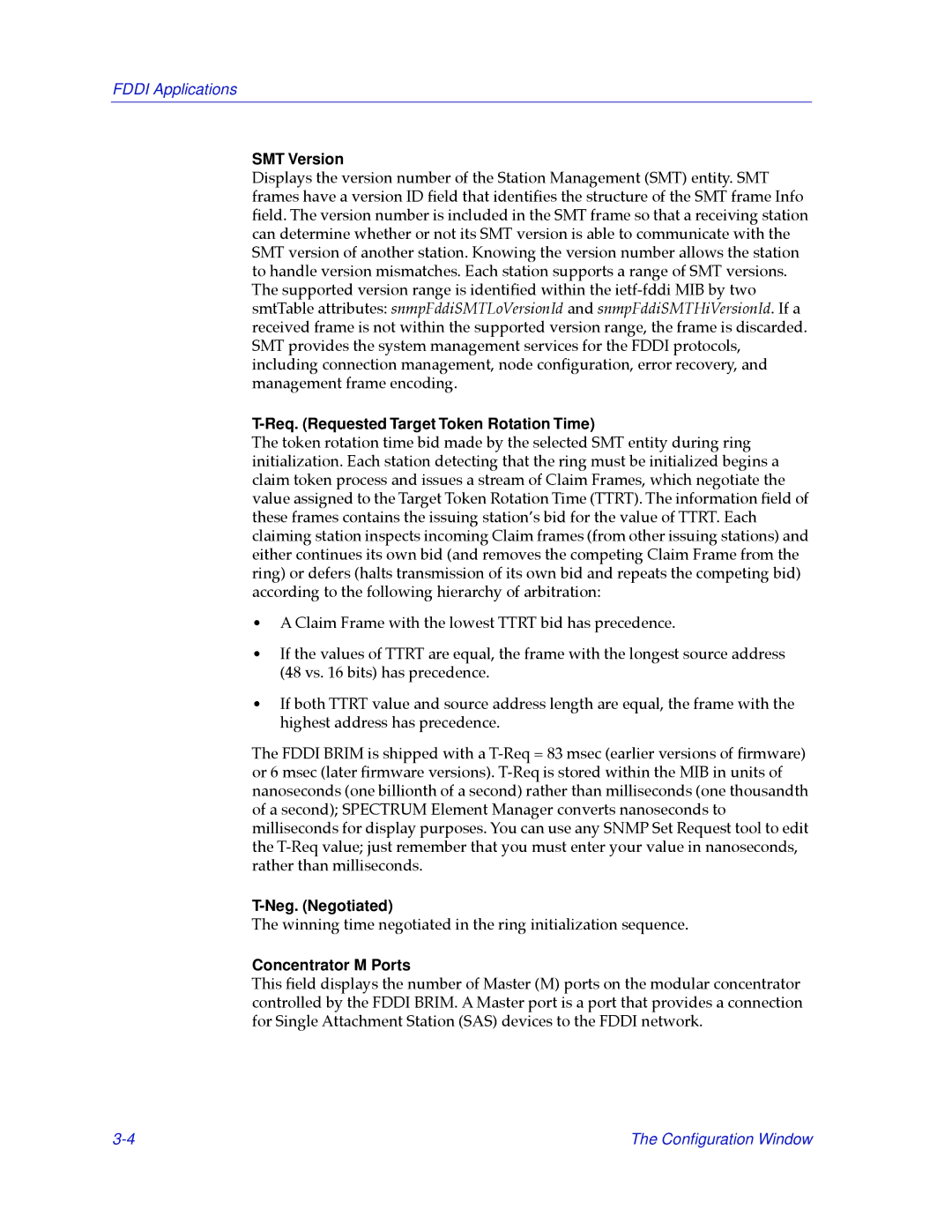FDDI Applications
SMT Version
Displays the version number of the Station Management (SMT) entity. SMT frames have a version ID Þeld that identiÞes the structure of the SMT frame Info Þeld. The version number is included in the SMT frame so that a receiving station can determine whether or not its SMT version is able to communicate with the SMT version of another station. Knowing the version number allows the station to handle version mismatches. Each station supports a range of SMT versions. The supported version range is identiÞed within the
T-Req. (Requested Target Token Rotation Time)
The token rotation time bid made by the selected SMT entity during ring initialization. Each station detecting that the ring must be initialized begins a claim token process and issues a stream of Claim Frames, which negotiate the value assigned to the Target Token Rotation Time (TTRT). The information Þeld of these frames contains the issuing stationÕs bid for the value of TTRT. Each claiming station inspects incoming Claim frames (from other issuing stations) and either continues its own bid (and removes the competing Claim Frame from the ring) or defers (halts transmission of its own bid and repeats the competing bid) according to the following hierarchy of arbitration:
¥A Claim Frame with the lowest TTRT bid has precedence.
¥If the values of TTRT are equal, the frame with the longest source address (48 vs. 16 bits) has precedence.
¥If both TTRT value and source address length are equal, the frame with the highest address has precedence.
The FDDI BRIM is shipped with a
T-Neg. (Negotiated)
The winning time negotiated in the ring initialization sequence.
Concentrator M Ports
This Þeld displays the number of Master (M) ports on the modular concentrator controlled by the FDDI BRIM. A Master port is a port that provides a connection for Single Attachment Station (SAS) devices to the FDDI network.
The Configuration Window |
